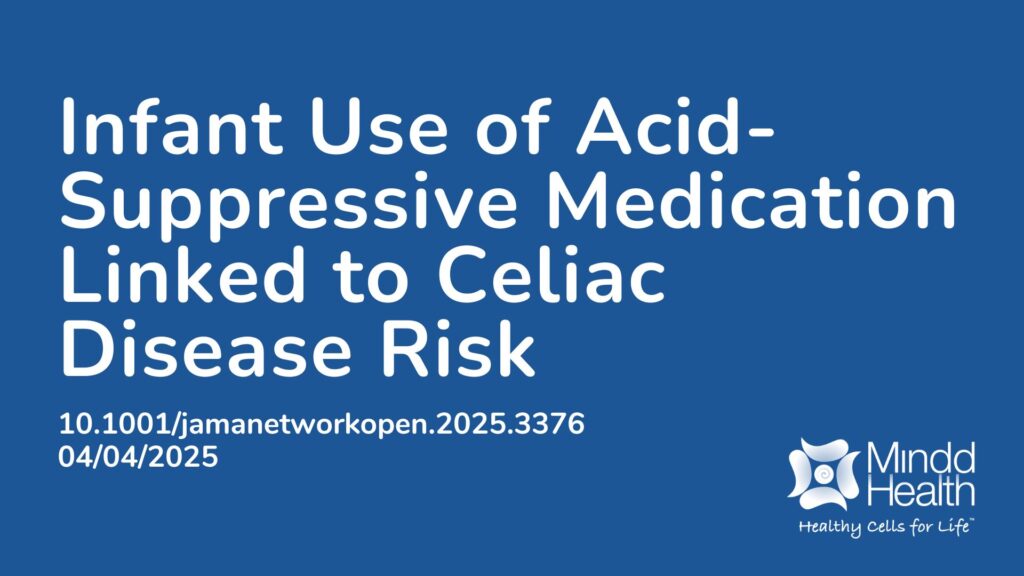Summary:
Use of acid-suppressive medications like proton-pump inhibitors (PPIs) and histamine-2 receptor antagonists (H2RAs) in early life has increased in recent years. Some studies suggest a link between this early use and long-term health issues, including celiac disease. This study explored that potential connection by analyzing data from a large population of children born between 2005 and 2020. Children were grouped based on whether they had taken acid-suppressive medication in their first six months and were followed until age 10 or the end of 2023. The initial analysis showed that children who had used these medications were more likely to develop celiac disease autoimmunity. However, when a different method called a test-negative case-control design was used, focusing only on children who had been tested for celiac disease, the association was not statistically significant. This suggests that the link found in the cohort study may be influenced by other factors, such as how often children received medical care. Overall, the cohort study showed a significant association, meaning prescription of acid-suppressive medications should be used with caution among infants.
Abstract:
Importance: Early-life use of acid-suppressive therapy has increased over the past 2 decades. Although these medications are widely used, recent studies showed an association between early-life use of acid-suppressive therapy and various long-term outcomes, including celiac disease. Objective: To assess the association between early-life use of acid-suppressive therapy and the risk of celiac disease autoimmunity using 2 observational approaches on a large population-based database. Design, Setting, and Participants: The cohort study took place in Israel using Maccabi Healthcare Services data. The data were collected on December 8, 2023, and were initially analyzed from January to May 2024. Analysis of the data continued during the revision rounds that took place from October 2024 to February 2025. Children born between January 1, 2005, and December 31, 2020, were included, grouped based on their exposure to acid-suppressive therapy within the first 6 months after birth and subsequently followed up for outcome development until the age of 10 years or December 8, 2023. A retrospective matched cohort design (N = 79 820) and retrospective matched test-negative case-control design (n = 24 684), including only the population tested for celiac disease autoimmunity, were used separately and compared. Exposure: Prescription purchase of acid-suppressive therapy, either proton-pump inhibitors or histamine-2 receptor antagonists, during the first 6 months of life. Main Outcomes and Measures: Celiac disease autoimmunity was defined as a positive anti–transglutaminase 2 enzyme-linked immunosorbent assay test result according to the thresholds of the commercial kits used. Time to first positive result for celiac disease autoimmunity was defined as the outcome in the cohort design, and acid-suppressive therapy use was defined as the outcome in the test-negative design. Results: The cohort design included 79 820 children (41 319 boys with no acid-suppressive therapy use [51.8%]; median birth year, 2015 [IQR, 2011-2018]), of whom 19 955 (25.0%) used acid-suppressive therapy. The rate of celiac disease autoimmunity was significantly higher among children using acid-suppressive therapy than among those not using acid-suppressive therapy (1.6% [310 of 19 955] vs 1.0% [610 of 59 865]; P < .001). The adjusted hazard ratio of acid-suppressive therapy use for development of celiac disease autoimmunity was 1.52 (95% CI, 1.33-1.74). In the test-negative case-control design, a total of 24 684 children were included (62.2% girls; median birth year, 2012 [IQR, 2009-2016]), of whom 6176 (25.0%) were celiac disease autoimmunity positive. The rate of acid-suppressive therapy users among those who tested positive for celiac disease autoimmunity was not significant compared with those who tested negative (5.0% [309 of 6176] vs 4.6% [858 of 18 508]; P = .25). The adjusted odds ratio of a positive celiac disease autoimmunity test for acid-suppressive therapy use was 1.07 (95% CI, 0.94-1.23), which was nonsignificant compared with the population that tested negative. Conclusions and Relevance: This retrospective study included both cohort and test-negative case-control designs. In the cohort design, acid-suppressive therapy was significantly associated with celiac disease autoimmunity. In the test-negative case-control design, this association was not significant. These results suggest a residual confounding by health care utilization in cohort designs studying celiac disease and suggest a noncausal association between acid-suppressive therapy and celiac disease autoimmunity.
Article Publication Date: 04/04/2025
DOI: 10.1001/jamanetworkopen.2025.3376



